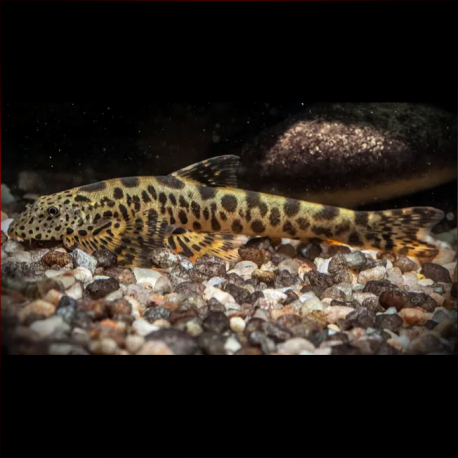More info
Datasheet
| Minimum Tank Size | 120 litres / 31.70 US gallons |
| Maximum Size | 10.0cm / 3.94inches |
| Temperature | 16°C / 60.80°F - 24°C / 75.20°F |
| Hardness | 2.02dgH / 36ppm - 12.05dgH / 215ppm |
| pH | 6.0-7.5 |
General Description
Bhavania australis, commonly known as Bhavania, is a rarely seen species in the international aquarium trade, primarily cared for by Indian aquarists. Belonging to the family Balitoridae, these fish are adapted for life in fast-flowing waters, featuring horizontally oriented paired fins, a flattened body, and a depressed belly. They use a unique sucker-like structure to cling onto solid surfaces and move by crawling and hopping over rocks and substrates.
Aquarium Setup
For maintaining Bhavania in captivity, it is crucial to ensure clean, well-oxygenated water. A filtration system with a turnover of 10-15 times per hour is recommended, along with the inclusion of powerheads and airstones as needed. The tank should have a substrate mix of gravel and sand with water-worn rocks and pebbles. While aquatic plants are not common in their natural habitat, adaptable species like Microsorum, Crinum, and Anubias can be added for cover and algae growth. It is essential to avoid biologically immature setups and promote the growth of aufwuchs on tank surfaces.
Behaviour
Despite not being aggressive, Bhavania has specific tankmate requirements that limit suitable companions. In nature, they are found in aggregations, displaying bolder behaviors in groups of six or more. Compatible species include Barilius, Garra, Devario, Rasbora, Rhinogobius gobies, and various catfish types. However, harmless squabbles may occur, especially with Balitoridae loaches, so research before selecting tankmates is recommended.
Feeding and Diet
Bhavania species are specialized grazers, feeding on biofilm, benthic crustaceans, insect larvae, and other invertebrates in their natural habitat. In captivity, they may accept sinking dried foods, but a diet rich in live or frozen Daphnia, Artemia, and bloodworms is crucial for their health. Ensuring the presence of algae and aufwuchs in the tank is highly preferable for their nutritional needs.
Reproduction & Dimorphism
Information regarding the reproductive behavior and specific dimorphic features of Bhavania species are not provided in current available references.
Habitat and Distribution
Endemic to the Western Ghats mountains in southern India, Bhavania australis inhabits shallow, fast-flowing headwaters with oxygen-rich water, characterized by riffles, runs, pools, and cascades. Their habitat consists of substrates of rocks, sand, and gravel with minimal aquatic plants. They are distributed across various river systems in states like Kerala, Tamil Nadu, and Karnataka, displaying a preference for clear, oxygen-saturated water conditions in their natural ecosystem.

